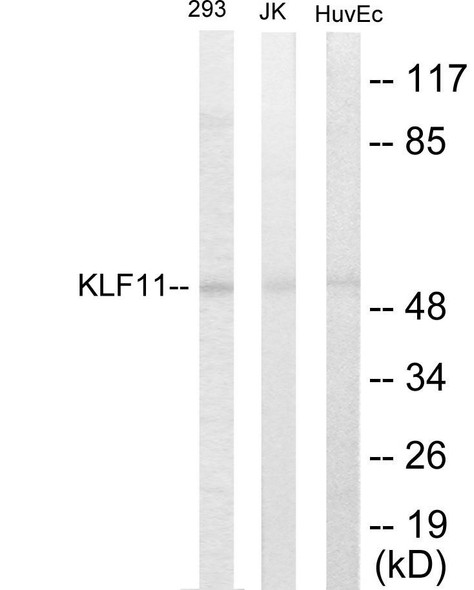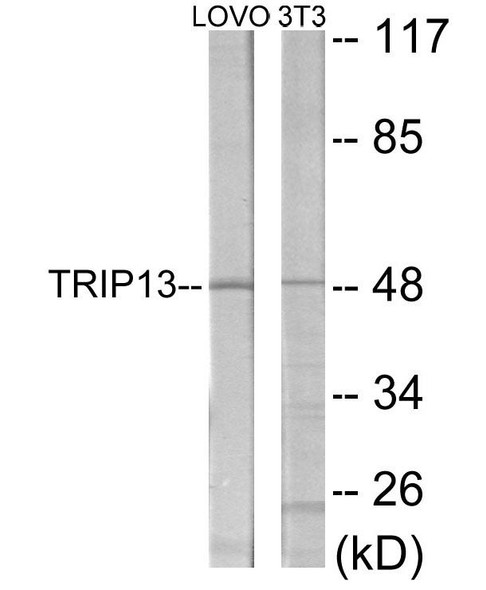Epigenetics and Nuclear Signaling
HOXA1 Colorimetric Cell-Based ELISA
- SKU:
- CBCAB01018
- Product Type:
- ELISA Kit
- ELISA Type:
- Cell Based
- Research Area:
- Epigenetics and Nuclear Signaling
- Reactivity:
- Human
- Reactivity:
- Mouse
- Reactivity:
- Rat
- Detection Method:
- Colorimetric
Description
| Product Name: | HOXA1 Colorimetric Cell-Based ELISA |
| Product Code: | CBCAB01018 |
| ELISA Type: | Cell-Based |
| Target: | HOXA1 |
| Reactivity: | Human, Mouse, Rat |
| Dynamic Range: | > 5000 Cells |
| Detection Method: | Colorimetric 450 nmStorage/Stability:4°C/6 Months |
| Format: | 96-Well Microplate |
The HOXA1 Colorimetric Cell-Based ELISA Kit is a convenient, lysate-free, high throughput and sensitive assay kit that can detect HOXA1 protein expression profile in cells. The kit can be used for measuring the relative amounts of HOXA1 in cultured cells as well as screening for the effects that various treatments, inhibitors (ie siRNA or chemicals), or activators have on HOXA1.
Qualitative determination of HOXA1 concentration is achieved by an indirect ELISA format. In essence, HOXA1 is captured by HOXA1-specific primary antibodies while the HRP-conjugated secondary antibodies bind the Fc region of the primary antibody. Through this binding, the HRP enzyme conjugated to the secondary antibody can catalyze a colorimetric reaction upon substrate addition. Due to the qualitative nature of the Cell-Based ELISA, multiple normalization methods are needed:
| 1. | A monoclonal antibody specific for human GAPDH is included to serve as an internal positive control in normalizing the target absorbance values. |
| 2. | Following the colorimetric measurement of HRP activity via substrate addition, the Crystal Violet whole-cell staining method may be used to determine cell density. After staining, the results can be analysed by normalizing the absorbance values to cell amounts, by which the plating difference can be adjusted. |
| Database Information: | Gene ID: 3198, UniProt ID: P49639, OMIM: 142955/601536, Unigene: Hs.67397 |
| Gene Symbol: | HOXA1 |
| Sub Type: | None |
| UniProt Protein Function: | HOXA1: Sequence-specific transcription factor which is part of a developmental regulatory system that provides cells with specific positional identities on the anterior-posterior axis. Acts on the anterior body structures. Seems to act in the maintenance and/or generation of hindbrain segments. Defects in HOXA1 are the cause of Athabaskan brainstem dysgenesis syndrome (ABDS); also known as Narvajo brainstem syndrome. This syndrome is characterized by horizontal gaze palsy, sensorineural deafness, central hypoventilation, and developmental delay. Some patients had swallowing dysfunction, vocal cord paralysis, facial paresis, seizures, and cardiac outflow tract anomalies. Defects in HOXA1 are the cause of Bosley-Salih-Alorainy syndrome (BSAS). Affected individuals show horizontal gaze abnormalities, deafness, facial weakness, vascular malformations of the internal carotid arteries and cardiac outflow trac. Some patients manifest mental retardation and autism spectrum disorder. In contrast to individuals with ABSD, central hypoventilation is not observed in individuals with BSAS. Belongs to the Antp homeobox family. Labial subfamily. 3 isoforms of the human protein are produced by alternative splicing. |
| UniProt Protein Details: | Protein type:Oncoprotein; DNA-binding; Transcription factor Chromosomal Location of Human Ortholog: 7p15.3 Molecular Function:protein binding Biological Process: abducens nerve formation; anatomical structure morphogenesis; artery morphogenesis; cognition; embryonic neurocranium morphogenesis; inner ear development; multicellular organismal development; neuromuscular process; optokinetic behavior; outer ear morphogenesis; regulation of behavior; sensory perception of sound Disease: Athabaskan Brainstem Dysgenesis Syndrome |
| NCBI Summary: | In vertebrates, the genes encoding the class of transcription factors called homeobox genes are found in clusters named A, B, C, and D on four separate chromosomes. Expression of these proteins is spatially and temporally regulated during embryonic development. This gene is part of the A cluster on chromosome 7 and encodes a DNA-binding transcription factor which may regulate gene expression, morphogenesis, and differentiation. The encoded protein may be involved in the placement of hindbrain segments in the proper location along the anterior-posterior axis during development. Two transcript variants encoding two different isoforms have been found for this gene, with only one of the isoforms containing the homeodomain region. [provided by RefSeq, Jul 2008] |
| UniProt Code: | P49639 |
| NCBI GenInfo Identifier: | 6166216 |
| NCBI Gene ID: | 3198 |
| NCBI Accession: | P49639.2 |
| UniProt Secondary Accession: | P49639,O43363, A4D184, B2R8U7, |
| UniProt Related Accession: | P49639 |
| Molecular Weight: | 24,489 Da |
| NCBI Full Name: | Homeobox protein Hox-A1 |
| NCBI Synonym Full Names: | homeobox A1 |
| NCBI Official Symbol: | HOXA1 |
| NCBI Official Synonym Symbols: | BSAS; HOX1; HOX1F |
| NCBI Protein Information: | homeobox protein Hox-A1 |
| UniProt Protein Name: | Homeobox protein Hox-A1 |
| UniProt Synonym Protein Names: | Homeobox protein Hox-1F |
| Protein Family: | Homeobox protein |
| UniProt Gene Name: | HOXA1 |
| UniProt Entry Name: | HXA1_HUMAN |
| Component | Quantity |
| 96-Well Cell Culture Clear-Bottom Microplate | 2 plates |
| 10X TBS | 24 mL |
| Quenching Buffer | 24 mL |
| Blocking Buffer | 50 mL |
| 15X Wash Buffer | 50 mL |
| Primary Antibody Diluent | 12 mL |
| 100x Anti-Phospho Target Antibody | 60 µL |
| 100x Anti-Target Antibody | 60 µL |
| Anti-GAPDH Antibody | 60 µL |
| HRP-Conjugated Anti-Rabbit IgG Antibody | 12 mL |
| HRP-Conjugated Anti-Mouse IgG Antibody | 12 mL |
| SDS Solution | 12 mL |
| Stop Solution | 24 mL |
| Ready-to-Use Substrate | 12 mL |
| Crystal Violet Solution | 12 mL |
| Adhesive Plate Seals | 2 seals |
The following materials and/or equipment are NOT provided in this kit but are necessary to successfully conduct the experiment:
- Microplate reader able to measure absorbance at 450 nm and/or 595 nm for Crystal Violet Cell Staining (Optional)
- Micropipettes with capability of measuring volumes ranging from 1 µL to 1 ml
- 37% formaldehyde (Sigma Cat# F-8775) or formaldehyde from other sources
- Squirt bottle, manifold dispenser, multichannel pipette reservoir or automated microplate washer
- Graph paper or computer software capable of generating or displaying logarithmic functions
- Absorbent papers or vacuum aspirator
- Test tubes or microfuge tubes capable of storing ≥1 ml
- Poly-L-Lysine (Sigma Cat# P4832 for suspension cells)
- Orbital shaker (optional)
- Deionized or sterile water
*Note: Protocols are specific to each batch/lot. For the correct instructions please follow the protocol included in your kit.
| Step | Procedure |
| 1. | Seed 200 µL of 20,000 adherent cells in culture medium in each well of a 96-well plate. The plates included in the kit are sterile and treated for cell culture. For suspension cells and loosely attached cells, coat the plates with 100 µL of 10 µg/ml Poly-L-Lysine (not included) to each well of a 96-well plate for 30 minutes at 37°C prior to adding cells. |
| 2. | Incubate the cells for overnight at 37°C, 5% CO2. |
| 3. | Treat the cells as desired. |
| 4. | Remove the cell culture medium and rinse with 200 µL of 1x TBS, twice. |
| 5. | Fix the cells by incubating with 100 µL of Fixing Solution for 20 minutes at room temperature. The 4% formaldehyde is used for adherent cells and 8% formaldehyde is used for suspension cells and loosely attached cells. |
| 6. | Remove the Fixing Solution and wash the plate 3 times with 200 µL 1x Wash Buffer for five minutes each time with gentle shaking on the orbital shaker. The plate can be stored at 4°C for a week. |
| 7. | Add 100 µL of Quenching Buffer and incubate for 20 minutes at room temperature. |
| 8. | Wash the plate 3 times with 1x Wash Buffer for 5 minutes each time. |
| 9. | Add 200 µL of Blocking Buffer and incubate for 1 hour at room temperature. |
| 10. | Wash 3 times with 200 µL of 1x Wash Buffer for 5 minutes each time. |
| 11. | Add 50 µL of 1x primary antibodies (Anti-HOXA1 Antibody and/or Anti-GAPDH Antibody) to the corresponding wells, cover with Parafilm and incubate for 16 hours (overnight) at 4°C. If the target expression is known to be high, incubate for 2 hours at room temperature. |
| 12. | Wash 3 times with 200 µL of 1x Wash Buffer for 5 minutes each time. |
| 13. | Add 50 µL of 1x secondary antibodies (HRP-Conjugated AntiRabbit IgG Antibody or HRP-Conjugated Anti-Mouse IgG Antibody) to corresponding wells and incubate for 1.5 hours at room temperature. |
| 14. | Wash 3 times with 200 µL of 1x Wash Buffer for 5 minutes each time. |
| 15. | Add 50 µL of Ready-to-Use Substrate to each well and incubate for 30 minutes at room temperature in the dark. |
| 16. | Add 50 µL of Stop Solution to each well and read OD at 450 nm immediately using the microplate reader. |
(Additional Crystal Violet staining may be performed if desired – details of this may be found in the kit technical manual.)






